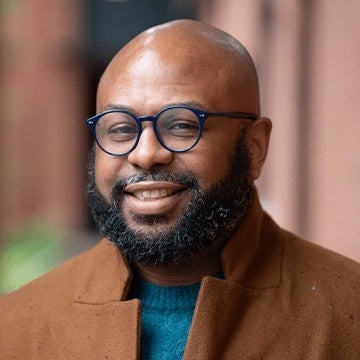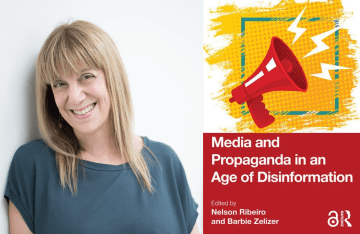First-of-Its-Kind Study Analyzes Digital Mourning Practices of Gang-Affiliated Youth
A study led by Prof. Desmond Patton explores how gang-affiliated Black youth use Twitter content, photos, and emojis to memorialize the deceased and navigate feelings of grief and loss.

Researchers at SAFELab
A new paper co-written by Desmond Upton Patton, Brian and Randi Schwartz University Professor, explores the role of images in the online grieving practices of gang-affiliated Black youth.
The paper, published in New Media & Society, explores how gang-affiliated Black youth use Twitter content, photos, and emojis—referred to as multimodal tweets—to memorialize the deceased and navigate feelings of grief and loss.
“Black grief is not well-understood, both in offline and online spaces,” the authors write.

Patton is the co-director of SAFELab, a research initiative hosted by the School of Social Policy & Practice (SP2) and Annenberg, focused on examining the ways in which youth of color navigate violence, grief, and joy online and offline.
The paper’s co-authors include researchers at Columbia University, led by SAFELab doctoral student Nathan Aguilar, as well as Aviv Landau, co-director of SAFELab and research assistant professor at SP2, and Shana Kleiner, lab manager of SAFELab.
The researchers analyzed a dataset of Twitter conversations among youth residing in Chicago neighborhoods characterized by high levels of gang activity, taking a critical lens toward the impact of racial segregation and grief on the offline experiences of this population.
Their findings reveal that multimodal tweets are intrinsically linked with the grieving process of gang-affiliated Black youth. This population of young people utilizes photos to speak to those who have passed away and maintain a connection to their lost loved ones. Researchers identified three themes among the multimodal tweets:
- Adoration – Expressing connection and affection for the deceased.
- Maintaining reputation – Safeguarding the social status and image of the deceased.
- Perseverance – Embodying a commitment to moving forward and embracing life.
The study offers insights that can inform the development of prevention and intervention strategies to support gang-affiliated youth experiencing grief and loss. “Attempting to understand language and imagery posted online by gang-affiliated youth is also an attempt to understand their internal meaning-making and memorialization process when presented with violence, loss, and hardship,” the authors write.
Due to his groundbreaking body of research, Patton was one of 13 participants invited to the White House on Wednesday, January 31, 2024 for a listening session convened by the Biden-Harris Administration’s Task Force on Kids Online Health and Safety (KOHS).
At the KOHS Task Force listening session, Patton joined academic experts, youth advocates, civil society leaders, and practitioners at the White House to discuss advancing the health, safety, and privacy of children online.
This story was originally posted on School of Social Policy & Practice (SP2) News.



